NEWYou can now listen to Fox News articles!
The American Prairie (AP), a conservation project in Montana, has quietly scooped up more than 450,000 acres of land with the help of its billionaire donors and the federal government.
The little-known project aims to create the largest “fully functioning ecosystem” in the continental U.S. by stitching together about 3.2 million acres of private and public lands, according to the American Prairie Foundation which founded the reserve more than 20 years ago. The group has recorded 34 transactions spanning roughly 453,188 acres of land throughout central Montana — much of which were once used for farming and grazing — since 2004 and continues to aggressively expand.
“Our mission is to assemble the largest complex of public and private lands devoted to wildlife in the lower 48,” Pete Geddes, AP’s vice president and chief external relations officer, told Fox News Digital in an interview. “For comparison, about 25% larger than Yellowstone.”
PURCHASE OF PRIME NORTH DAKOTA FARMLAND TIED TO BILL GATES SPARKS OUTRAGE
“We’re not asking the federal government to create anything, we’re not asking the federal government for any money,” he added. “Instead, we’re engaged in private philanthropy and voluntary exchange by buying ranches from people who would like to sell that to us.”
Cattle are pictured during the COVID-19 pandemic.
(Fox News)
The American Prairie Foundation has raised tens of millions of dollars in recent years, according to recent tax filings, thanks, in large part, to its donors which include well-known Wall Street and Silicon Valley magnates. Hansjoerg Wyss, a Swiss financier and mega-donor of liberal causes, deceased German retail mogul Erivan Haub, John Mars, the heir to the Mars candy fortune, and Susan Packard Orr, daughter of the Hewlett-Packard Co. co-founder, have all donated to AP, Bloomberg previously reported.
AP said about 3% of its contributions have come from international donors.
SOUTH DAKOTA REPUBLICAN CALLS FOR BILL GATES TO TESTIFY BEFORE AGRICULTURE COMMITTEE AMID FARM BUY
“It’s an area that doesn’t have a lot of people in it and has been depopulating for a long, long time,” Geddes said. “So, the thinking was, perhaps there’s greater potential for less conflict over conservation in this part of the world.”
AP’s plans, though, have faced increasing pushback from top state officials and local ranchers who argue such a nature reserve would remove key land from production and negatively impact surrounding privately-owned lands. Using its donor funds, the group has purchased about 118,000 acres of private land and leased another 334,000 acres of public land owned primarily by the federal government.
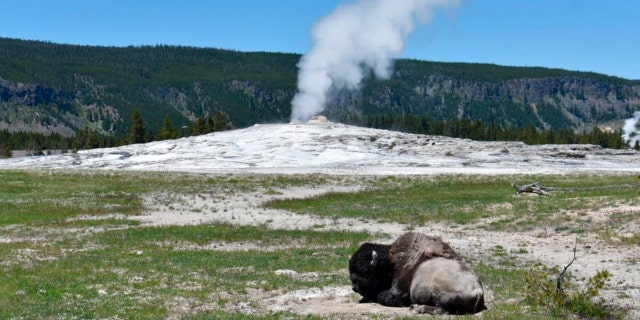
A bison lays down on the ground in front of the Old Faithful geyser in Yellowstone National Park, Wyo., on June 22.
((AP Photo/Matthew Brown))
“Those donors are able to write those contributions off as a charitable donation, so they don’t have to live with the consequences of what they’re doing to these communities,” said Chuck Denowh, the policy director at the United Property Owners of Montana (UPOM), a group made up of local ranchers opposed to AP’s plans.
“It’s really concerning that we have such an amount of foreign money coming into AP to buy up our ag land,” he told Fox News Digital. “For the future of food security of this country, we need to take a close look at that.”
Denowh said the vast majority of locals throughout the surrounding counties, who have looked after and conserved the land for decades, are opposed to the AP’s plans. The region is almost entirely dependent on the agriculture industry.
Opponents of AP have focused their ire in particular on one of the group’s chief proposals to release wild bison onto the property, giving visitors “a chance to witness the majestic species.” UPOM has expressed concern that free-roaming bison may infect surrounding livestock with brucellosis, an infectious disease commonly found in bison and elk populations, which could be extremely costly for ranchers if spread to their cattle.
BIDEN EPA PROPOSES REGULATION THAT FARMERS WARN WILL DRIVE FOOD PRICES HIGHER
AP requested permission from the Bureau of Land Management (BLM), the federal agency responsible for managing 245 million acres of public lands, to allow bison grazing on portions of the leased property in 2017 and again in 2019. The agency announced Thursday that it had approved the AP’s request for bison grazing across 63,500 acres of federal property.
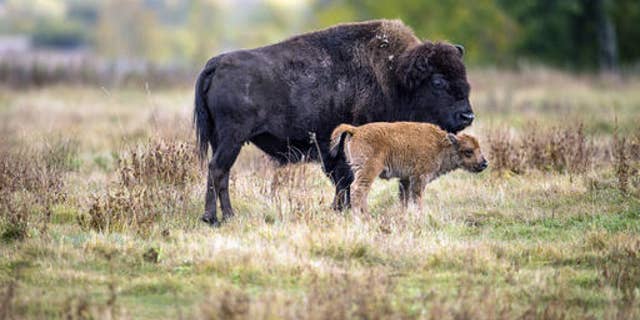
A bison and it’s calf roam in a section of the Elk Island National Park, Canada. Descendants of a bison herd in Canada were relocated to a Montana American Indian reservation in 2018.
((Parks Canada via AP))
Gov. Greg Gianforte and a series of state agency heads penned letters to BLM late last year urging the agency not to approve the request. Montana Department of Agriculture Director Christy Clark said the plan would remove “large chunks of land from production agriculture,” likely decrease agricultural production revenue and harm support industries in the area like machinery sales and ranch laborers.
“It’s just flatly illegal,” Montana Attorney General Austin Knudsen told Fox News Digital in an interview. “This is federal land that is specifically — by the Taylor Grazing Act, by federal law — set aside for livestock grazing. Bison are not livestock, even under federal law.”
“That’s the part that everyone just seems to be ignoring here,” he continued. “AP doesn’t want to admit that, certainly the Bureau of Land Management and the Department of Interior don’t want to admit that. But that’s just the fact.”
SUPREME COURT DEALS BIDEN CLIMATE AGENDA SERIOUS BLOW WITH EPA DECISION
Knudsen slammed AP for what he called its surreptitious plan to create an “American Serengeti” where “liberal coastal elites can come and hang out and look at the pretty animals.” The attorney general added that his office is closely reviewing the Biden administration’s decision Thursday to determine its next steps to protect ranchers and the state’s interests.
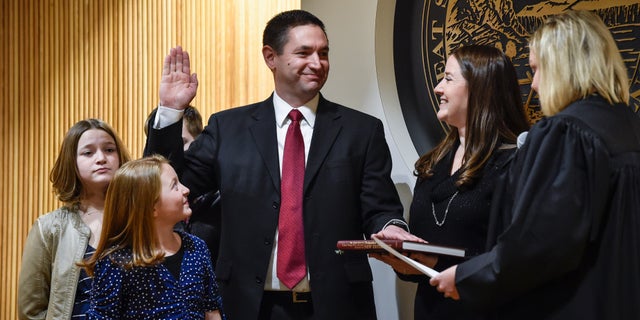
Montana Attorney General Austin Knudsen is sworn into office on May 27, 2021.
(Thom Bridge/Independent Record via AP, File)
The Taylor Grazing Act, which Congress passed in 1934, is designed to prevent overgrazing by allowing local ranchers to lease public land for livestock grazing and raising forage crops. The bill was approved to increase food and livestock production on land that had, for years, been severely mismanaged.
While AP has argued the law allows for bison grazing, the group has also acknowledged its plans are primarily centered on conservation, not production. For example, the group boasts on its website that its land acquisitions have already led to the retirement of 63,777 acres of cattle grazing leases in the Charles M. Russell National Wildlife Refuge, allowing federal authorities to “restore the habitat primarily for wildlife use.”
“We don’t think of it as non-productive use,” Geddes told Fox News Digital. “Those bison are playing very productive roles. It’s absolutely true they’re not a commercial livestock production, but they’re productive in the sense of what they do for that prairie ecosystem.”
KENTUCKY FLOODING ‘DEVASTATING,’ OFFICIALS EXPECTING LOSS OF LIFE, BESHEAR SAYS
“Yeah, some of that land is going out of production, but land is going out of production everywhere, all the time,” he continued.
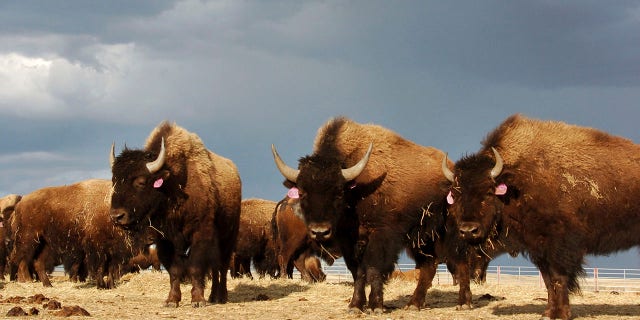
A herd of bison stand in a pen on the Fort Peck Reservation near Poplar, Mont., in 2021.
(AP Photo/Matthew Brown, File)
An estimated 800 bison currently roam on some of AP’s property, a number the group hopes will swell to “several thousand” as part of its wildlife restoration plan.
AP currently leases out some of the land it oversees to cattle ranchers, who, amid a major regional drought, are desperate for grasslands available for livestock grazing. Geddes said those ranchers have been made well aware of AP’s plans to eventually push them off reserve property once bison are allowed to roam on that leased land.
“Let’s say in a couple of years, we have 1,200 head of bison. In the seven counties in which we work, there are probably half a million head of cattle,” he added. “This critique that we’re somehow dropping the neutron bomb and wiping out agriculture in this area — it’s just nonsensical.”
Montana’s $4.72 billion agriculture industry is among the state’s largest sectors and supplies the U.S. with a large supply of wheat, hay, lentils, corn and meat, according to the Montana Department of Agriculture. As of January, Montana ranchers operated an inventory of 2.2 million cattle, making it one of the few states with more cattle than people.
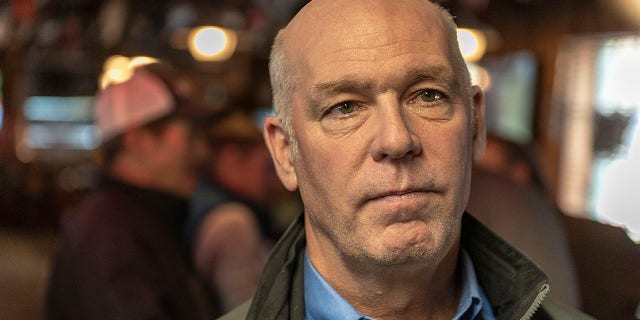
Gov. Greg Gianforte, R-Mont., is pictured in 2018 in Pray, Montana. Gianforte has opposed a BLM proposal to allow bison grazing in the state.
(William Campbell-Corbis via Getty Images)
Overall, cattle inventories have declined in Montana and across the country over the last several years, a recent report from the U.S. Department of Agriculture’s National Agricultural Statistics Service showed.
CLICK HERE TO GET THE FOX NEWS APP
“AP is working to buy up as much land as they can to take as many cattle off the landscape as they can and, ultimately, drive those folks out of there,” Denowh told Fox News Digital. “Those lands were created in the first place to ensure an adequate and consistent supply of protein for the country.”
“That’s probably one of the bigger dangers from AP,” he said. “If they can set this new precedent with BLM, we think that [non-governmental organizations] throughout the West are going to be buying up land to take control of these grazing leases and take them out of production. This is really bigger than AP.”